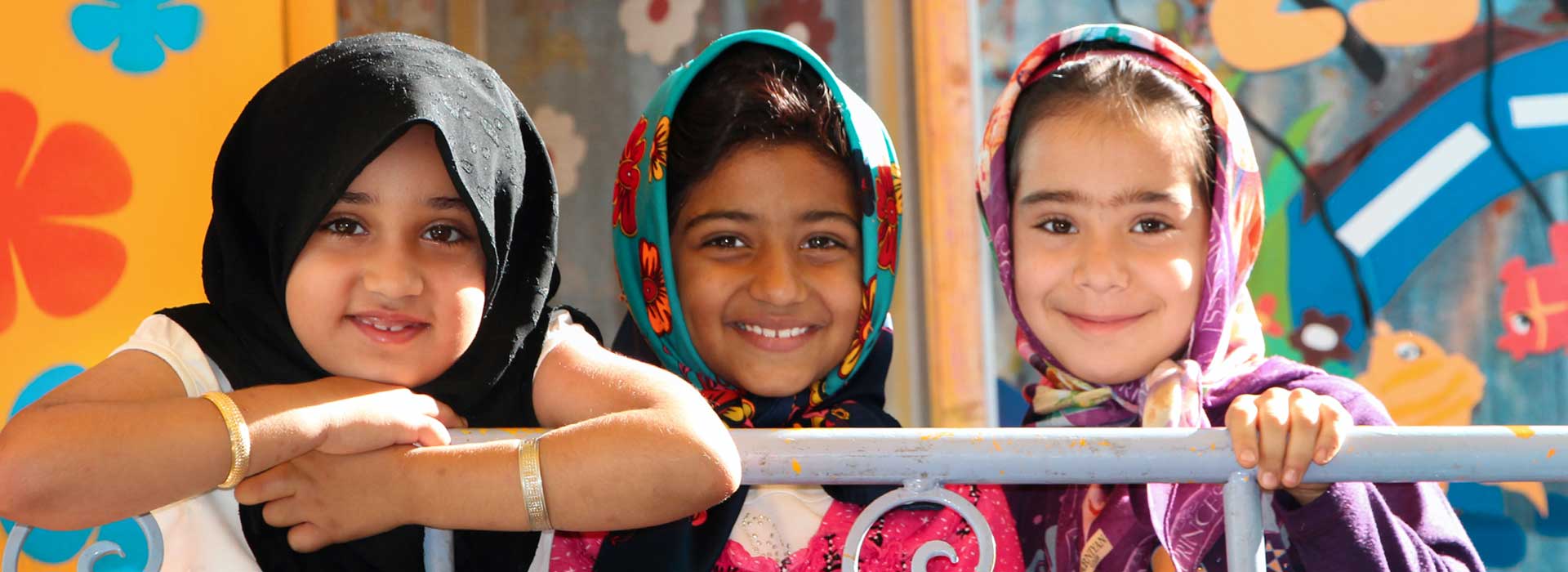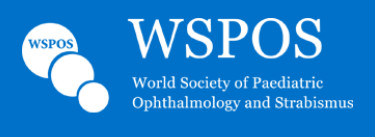Education
Case Report: Case 8
Case Presenters
Dr. Renata Alves graduated from Faculdade de Medicina da Fundação do ABC, São Paulo, in 1995. In 1996, she initiated her Residency program in Ophthalmology, at the same institution. She did a fellowship from 1998-2000. Since 2015, she works at Strabismus Department of CEMA Institute, service under supervision of Prof Dr. Mauro Goldchmit, and is a current member of the Executive Board of Strabos Institute.
Status: CASE CLOSED
Members’ Responses:
(1) Assuming the presence of amblyopia and nystagmus when trying to fixate with the amblyopic eye, would you keep patching?
88.37% answered ‘Yes’
11.63% answered ‘No’
(2) Assuming the child is 6-months old, when is the optimal time for surgery?
19.05% said they would do so ‘At the time of diagnosis’
57.14% opted for ‘Between 6 and 12 months’
The remaining 23.81% would ‘After 12 months’.
(3) Considering large deviations in infants:
i) Would you do botox injection before surgery? 9.3% said ‘Yes’ & 90.7% said ‘No’
ii) How many muscles would you operate on? 37.21% would operate on ‘Two’; 44.19% on ‘Three’ & the remaining 18.6% would operate on ‘Four’ muscles
Experts Opinion
In addition to answering the questions posed to our members, our Experts were also asked the following questions :
1. Would you consider botox injection to the MRs? If yes, how many units?
2. How many muscles would you operate on?
3. Do you consider general anesthesia as a risk when operating on a six month old child?
4. Considering overaction of both IO at the time of diagnosis, would you perform IOAT OU in the first procedure?
Seo Wei Leo

Dr. Seo Wei Leo graduated from medical school at the National University of Singapore with Gold Medal & Book Prize in Ophthalmology. After obtaining the Fellowship of Royal College of Surgeons of Edinburgh, she completed 2 intensive clinical fellowships in the USA. The first was an ACGME – accredited clinical fellowship at the University of Michigan Ann Arbor, Ann Arbor with Dr Monte A del Monte and Dr S Archer; followed by a stint with Dr Kenneth Wright in Los Angeles. She has since published numerous peer-reviewed articles and book chapters and she is also a reviewer for many journals including Survey of Ophthalmology, British Journal of Ophthalmology. She frequently presents or conducts instructional workshops and has performed live surgery at various international conferences. Prior to starting private practice in 2012, she was Head, Paediatric Ophthalmology and Strabismus, National Healthcare Group Eye Institute and Clinical Lecturer, Faculty of Medicine, National University of Singapore, Yong Loo Lin School of Medicine. Accolades for her research work include The Eye Institute-Pfizer Research Prize for Best Original Paper in 2004 and the best of show at the 2010 Annual Meeting of the American Academy of Ophthalmology. Dr Leo Is currently board member, CIRB Centralised Institutional Research Board, Singhealth in Singapore. She is also in the Scientific Bureau of WSPOS and she remains as a committee member of the American Academy of Ophthalmology.
(1) Assuming the presence of amblyopia and nystagmus when trying to fixate with the amblyopic eye, would you keep patching? (a) Yes (b) No
Yes
2) Assuming the child is 6-months-old, when is the optimal time for surgery? (a) At the time of diagnosis (b) Between 6 and 12 months (c) After 12 months?
Between 6 and 12 months
3) Considering large deviations in infants; Would you use botox injection before surgery? (a) Yes (b) No?
No
(4) How many muscles would you operate on? (a) Two (b) Three (c) Four?
Three; I would do 3 muscles first, but I will of course talk to parents regarding potential need for multiple surgery.
(5) Do you consider general anesthesia as a risk when operating on a six-month old child?
As in any procedure, there is always risks. I will tell the parents that repeated or lengthy exposure to general anesthesia may potentially be problematic but in this case, it is a short day surgery procedure.
(6) Considering overaction of both IO at the time of diagnosis, would you perform IOAT OU in the first procedure?
In my experience, the IO overaction usually is apparent only later, after 1 year of age. So during the first procedure (which is before 1 year of age), only the horizontal muscles would be operated on. If the patient truly had both ET and significant IO overaction noted very early, I would perform IO surgery in addition to the horizontal muscle surgery.
Scott Lambert

Dr. Scott R. Lambert is a Professor of Ophthalmology and Paediatrics who specializes in treating eye diseases in children and adults with strabismus. Prior to joining the faculty at Stanford in 2016, he was the R. Howard Dobbs Professor of Ophthalmology at Emory University and the Chief of Ophthalmology at Children’s Healthcare of Atlanta. Dr. Lambert graduated from medical school at Yale University and completed a residency in ophthalmology at the University of California, San Francisco. He then completed a fellowship in pediatric ophthalmology at the Hospital for Sick Children in London and in adult strabismus in San Francisco. Dr. Lambert is the co-editor of two books published in 2016 – the 5th edition of the leading textbook in his field – Pediatric Ophthalmology and Strabismus and a book on Congenital Cataracts. He is the author or co-author of more than 200 articles in peerreviewed journals on a broad range of topics including the treatment of congenital cataracts, strabismus in adults and children, optic disc abnormalities and corneal disorders in children.
He has been an invited speaker at pediatric ophthalmology conferences throughout the world including North America, South America, Europe, Asia, Africa, the Middle East and Australia. He has been actively involved in research throughout his entire career and is currently serving as the chairman of the Infant Aphakia Treatment Study – a NIH funded randomized clinical trial comparing the optical treatment of infants after cataract surgery with contact lenses vs. intraocular lenses. From 2013-2015 he served on the executive committee of the Pediatric Eye Disease Investigators Group–a large group of pediatric ophthalmologists who investigate new treatments for ocular disorders in children. He has received the Senior Honor award from the American Academy of Ophthalmology and currently serves as the chairman of their Pediatric Ophthalmic Technology Assessment Committee. He has received a lifetime achievement award from the American Association for Pediatric Ophthalmology and Strabismus.
(1) Assuming the presence of amblyopia and nystagmus when trying to fixate with the amblyopic eye, would you keep patching? (a) Yes (b) No
Yes
2) Assuming the child is 6-months-old, when is the optimal time for surgery? (a) At the time of diagnosis (b) Between 6 and 12 months (c) After 12 months?
At the time of diagnosis.
3) Considering large deviations in infants; Would you use botox injection before surgery? (a) Yes (b) No?
No. I do not have experience injecting BOTOX at the same time as performing medial rectus recessions in infants with esotropia. I have injected BOTOX into the medial rectus muscle of patients with complete sixth nerve palsies when performing a superior and inferior vertical rectus transposition procedure. I have stopped doing this since I switched to performing a medial rectus recession and a superior rectus transposition for patients with complete sixth nerve palsies. It would be helpful to have a prospective clinical trial to determine if the outcomes are better for children with infantile esotropia when BOTOX is used to augment the effect of the medial rectus recession.
(4) How many muscles would you operate on? (a) Two (b) Three (c) Four?
Four. Given how large this esotropia was preoperatively, I agree with the authors that it was reasonable to operate on all four horizontal rectus muscles. In most cases of infantile esotropia, I only perform medial rectus recessions, but this patient had a particularly large angle esotropia.
(5) Do you consider general anesthesia as a risk when operating on a six-month old child?
I do consider the risks of general anesthesia whenever I perform surgery. However, I do think that one could make a strong case that outcomes are better with early surgery for infantile esotropia that justifies the use of general anesthesia at such a young age.
(6) Considering overaction of both IO at the time of diagnosis, would you perform IOAT OU in the first procedure?
It is rare that I observe inferior oblique overaction prior to strabismus surgery in a young child with infantile esotropia. However, if the inferior oblique muscles are clearly overacting I would recess them to minimize the number of times the child would have to be put to sleep using general anesthesia.
Josep Visa Nasarre

Dr. Josep Visa Nasarre is a Paediatric ophthalmologist and Strabismologist in addition to being the Co-ordinator of Paediatrics Ophthalmology and Strabismus at the Department at the Ocular
Microsurgery Institute (IMO) in Barcelona. He is also the Vice President of the Catalan Ophthalmology Society & the Ex-President of the Spanish and Paediatric Ophthalmology Society.
(1) Assuming the presence of amblyopia and nystagmus when trying to fixate with the amblyopic eye, would you keep patching? (a) Yes (b) No
If nystagmus is present, I do not patch. I use optical penalization, or depending on the age, atropine eye drops.
2) Assuming the child is 6-months-old, when is the optimal time for surgery? (a) At the time of diagnosis (b) Between 6 and 12 months (c) After 12 months?
My optimal age is after 12 months, as I can make a better examination with attention to any vertical deviations. I also always try to treat amblyopia before the surgery.
3) Considering large deviations in infants; Would you use botox injection before surgery? (a) Yes (b) No?
I don`t use botulinum toxin.
(4) How many muscles would you operate on? (a) Two (b) Three (c) Four?
I only operate 2 muscles at the first surgery because I think that with 3 or 4 muscle surgery I can decide if I need to do another surgery on one muscle alone or two. I would have operated only both medial rectus muscles.
(5) Do you consider general anesthesia as a risk when operating on a six-month old child?
I don’t consider that a general anaesthetic is a risk at 6 months of age.
(6) Considering overaction of both IO at the time of diagnosis, would you perform IOAT OU in the first procedure?
If I had diagnosed inferior oblique overaction at the initial examination my surgery would have been : bilateral medial rectus muscle recessions and weakening of both inferior obliques if the deviation is greater on adduction.
John Ferris

Dr. John Ferris trained at the Western Eye Hospital, Addenbrooke’s Hospital in Cambridge, Moorfields Eye Hospital and the Royal Children’s Hospital in Melbourne. He is a Consultant Ophthalmologist in the Gloucestershire Eye Unit with a special interest in strabismus and surgical training. He has been the Head of the School of Ophthalmology in the Severn Deanery since 2011 and was the Royal College of Ophthalmologists’ Lead for National Recruitment of Ophthalmology Trainees between 2001-17. He is the author of 3 textbooks, Basic Sciences in Ophthalmology (BMJ Publishing 2nd ed 1999), Essential Medical Ophthalmology (Butterworth Heinemann 2001) and Strabismus Surgery (Surgical Techniques in Ophthalmology series – Elsevier 2007). Strabismus Surgery was the first video atlas of strabismus surgery. In 2012 he launched SquintClinic.com, which is one of the world’s most popular patient information websites for patients with strabismus. In 2014 he developed the Simulated Ocular Surgery website, which demonstrates how high fidelity model eyes can be used to enhance the safety and effectiveness of ophthalmic surgical training. In June 2017 he launched the Simulation Gallery, in association with the American Academy of Ophthalmology, which is a website dedicated to showcasing innovative surgical training techniques from round the world. His current research interests are focused on investigating the impact of surgical simulation on the outcomes of surgery and on the role of “big data” in assessing the outcomes of amblyopia treatment and strabismus surgery.
(1) Assuming the presence of amblyopia and nystagmus when trying to fixate with the amblyopic eye, would you keep patching? (a) Yes (b) No
Yes
2) Assuming the child is 6-months-old, when is the optimal time for surgery? (a) At the time of diagnosis (b) Between 6 and 12 months (c) After 12 months?
Between 6 and 12 months
3) Considering large deviations in infants; Would you use botox injection before surgery? (a) Yes (b) No? If yes, how many units?
Yes; 2.5 Units. I would routinely use Botox to treat children who present to me with infantile esotropia before the age of 6 months. I do this for two reasons; firstly, because I believe surgery is highly unpredictable in this age group and secondly, as there is evidence that realigning the eyes at the earliest opportunity gives the child the best chance of establishing some form of binocular vision. I do not want to wait until they are 6-9 months old to operate on them. The aim of the Botox treatment to both medial recti, which I carry out under a short 10 minute GA with direct visualisation of the MR via a tiny fornix based incision, is to make the child exotropic. They are followed up closely in the weeks following treatment and their binocular responses, if present, are recorded as they drift into an orthophoric position. Children fall into three groups following Botox treatment; those that return to their previously large angle esotropia, those who end up with a smaller angle esotropia (10-30^) and those who remain within 6^ of orthophoria. In the first group, I offer the parents definitive surgery 2-3 months’ post Botox and if the child has shown some binocular responses following botox I am cautiously optimistic about being able to restore some form of binocular vision. In the moderate angle esotropia children, I will offer them repeat Botox treatment or surgery.
(4) How many muscles would you operate on? (a) Two (b) Three (c) Four?
Three; If the Esotropia is >50^ I will operate on 3 muscles, if >70^ I will perform a 4 muscle surgery. The maximal medial rectus recession I will perform for children with infantile esotropia is 11 mm from the limbus (this usually equates to 6mm from the insertion) and this is enough to correct esotropias of up to 50^. For angles between 55-70^ I will operate on 3 muscles and for angles greater than 70^ I will operate on 4 muscles. An alternative approach for 55-60^ esotropias is to augment the medial rectus recessions with 2.5 units of Botox to each muscle and this also works well in my hands.
(5) Do you consider general anesthesia as a risk when operating on a six-month old child?
If a child is otherwise fit and well and is not an ex-premature infant (when 6 months might only be 3 months post-gestational age) I am happy that general anaesthesia carries a low short and long term risk to the child. I do however work with a very experienced paediatric anaesthetist.
(6) Considering overaction of both IO at the time of diagnosis, would you perform IOAT OU in the first procedure?
Only if it was more than a +2 overaction; If a child has more than 2+ inferior oblique overreaction on presentation, which in my experience is unusual, I would perform bilateral inferior oblique anteriorisations at the same time as BMRRs. If three or four muscle surgery was needed for a large angle esotropia I would explain to the parents that inferior oblique surgery may well be needed as a planned second procedure.

